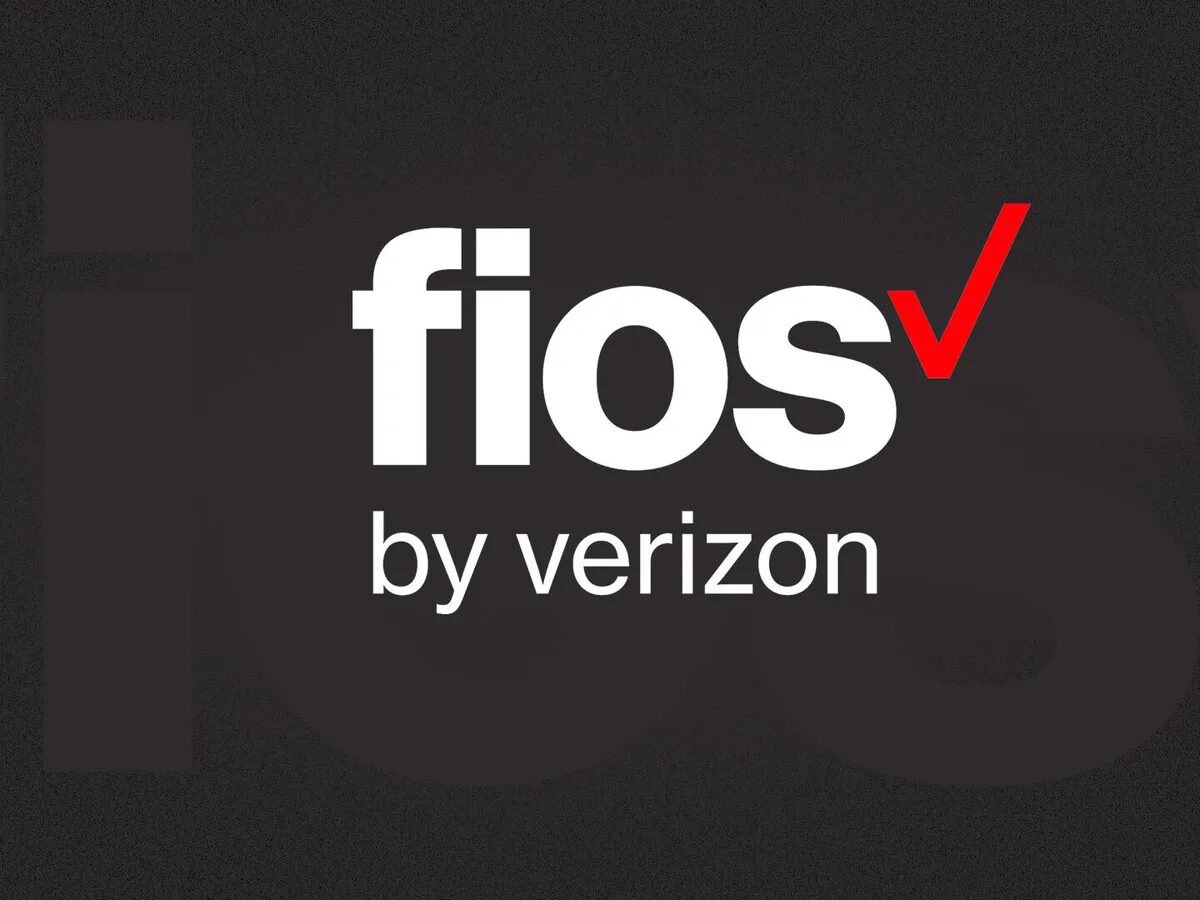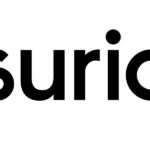In our increasingly connected world, a reliable and fast home internet connection has transitioned from a luxury to an absolute necessity. It powers our work, education, entertainment, communication, and much more. As one of the leading telecommunications companies in the United States, Verizon offers a diverse portfolio of internet solutions designed to meet varying needs and leverage different technologies. Navigating the array of verizon internet plans – primarily encompassing Fios, 5G Home Internet, and LTE Home Internet – can seem daunting. Understanding the technology behind each plan, typical speeds, pricing structures, availability, and key differentiators is crucial for making an informed decision. This article provides an in-depth exploration of the various verizon internet plans, aiming to equip you with the knowledge needed to choose the best fit for your household.

The Spectrum of Connectivity: Types of Verizon Internet Plans
Verizon’s approach to home internet isn’t one-size-fits-all. Recognizing that different locations have different infrastructure and customer needs vary, they deploy several distinct technologies:
- Verizon Fios (Fiber Optic Service): This is Verizon’s premium offering, utilizing a 100% fiber-optic network delivering data via light signals directly to the user’s home (FTTH). It’s known for its exceptional speed (especially symmetric upload/download speeds) and high reliability.
- Verizon 5G Home Internet: A fixed wireless access (FWA) service that delivers internet connectivity over Verizon’s 5G mobile network to a dedicated in-home receiver/gateway. Its availability is expanding rapidly, offering a modern alternative where Fios isn’t available.
- Verizon LTE Home Internet: Similar to 5G Home, but uses Verizon’s established 4G LTE network. This service targets areas currently lacking Fios or robust 5G coverage, extending broadband access to more rural and underserved locations.
- Verizon High Speed Internet (DSL): Verizon’s older internet service delivered over traditional copper phone lines. Availability is now very limited as Verizon focuses on fiber and wireless; speeds are significantly lower than other options. It’s generally not a primary focus for new verizon internet plans.
The Critical First Step: Availability Before diving deep into plan specifics, the single most crucial factor determining your options is availability. Fios has specific geographic limitations, while 5G and LTE Home depend on network coverage and capacity at your address. Always start by checking service availability for your specific location on Verizon’s official website.
Verizon Fios: The Fiber Optic Gold Standard
When available, Verizon Fios is often considered the top-tier choice due to the inherent advantages of fiber-optic technology.
Technology Explained: Fiber-to-the-Home (FTTH)
Unlike cable or DSL, which may use fiber part of the way but rely on older copper wiring for the final connection, Fios brings the fiber optic cable directly into your home. This results in:
- Higher Speeds: Capable of delivering gigabit and multi-gigabit speeds reliably.
- Symmetric Speeds: Download and upload speeds are typically identical (e.g., 300 Mbps download / 300 Mbps upload). This is crucial for video conferencing, large file uploads, online gaming, and cloud backups.
- Lower Latency: Reduced delay in data transmission, improving responsiveness for gaming and real-time applications.
- High Reliability: Less susceptible to interference and signal degradation compared to copper or wireless.
Read more about: verizon fios login
Verizon Internet Plans (Fios Tiers)
Verizon typically structures its Fios verizon internet plans into several speed tiers (exact names and speeds may evolve):
- Fios 300 Mbps: Often the entry-level plan, offering speeds of 300 Mbps download and 300 Mbps upload. Ideal User: Suitable for most households engaging in streaming HD/4K video on multiple devices, online gaming, video calls, and general web Browse. Represents excellent value where available.
- Fios 500 Mbps: A mid-tier option providing 500 Mbps symmetric speeds. Ideal User: Households with heavier internet usage, more connected devices, frequent large file downloads/uploads, or multiple simultaneous 4K streams. Offers a noticeable performance boost over the 300 Mbps plan.
- Fios Gigabit Connection (1 Gig): Delivers speeds approaching 1000 Mbps (often around 940 Mbps download / 880 Mbps upload due to network overhead). Ideal User: Power users, tech enthusiasts, homes with numerous smart devices, users transferring massive files regularly, or those wanting near-instantaneous downloads and maximum performance headroom.
- Fios Multi-Gig Plans (e.g., 2 Gig): Verizon’s highest-speed residential offerings, providing speeds up to 2 Gbps or potentially higher in select areas. Ideal User: Extremely high-demand households, users with specialized needs (e.g., home labs, massive data transfers), or those simply wanting the absolute fastest speeds available. Availability for these top tiers may be more limited initially.
Pricing, Contracts, and Fees for Fios Plans
- Tiered Pricing: Higher speeds correspond to higher monthly costs.
- Contracts: Verizon Fios verizon internet plans often come with no annual contract options, providing flexibility. Contract options might sometimes be available offering lower prices or specific perks.
- Autopay/Paper-Free Billing Discounts: Significant discounts (e.g., $10/month) are commonly offered for enrolling in automatic payments and paperless billing.
- Bundling: Discounts may apply when bundling Fios internet with Verizon Wireless mobile plans.
- Fees: Potential fees include a one-time setup/installation fee (sometimes waived with promotions or certain plans) and potential router rental fees (though many plans now include the router rental or offer purchase options). Taxes are additional.
Equipment
Fios installations require an Optical Network Terminal (ONT), which converts the light signals from the fiber into data your devices can use, and a Verizon router to provide Wi-Fi and wired connections.
Pros and Cons of Fios Verizon Internet Plans
Pros:
- Exceptional speeds (especially upload).
- High reliability and low latency.
- Symmetric speeds are a major advantage.
- Often competitive pricing for the performance offered.
- No data caps on standard plans.
Cons:
- Limited geographic availability (primarily US Northeast).
- Professional installation often required (though self-install options may exist in some cases).
- Potentially higher entry-level cost compared to some cable or wireless options.
Checking Fios Availability
Visit the Verizon website and enter your full street address into their service availability tool. This is the definitive way to know if Fios verizon internet plans are an option for you.
Verizon 5G Home Internet: Wireless Speed and Flexibility
Leveraging its expanding 5G network, Verizon offers 5G Home Internet as a compelling alternative, especially where Fios isn’t present.
Technology Explained: Fixed Wireless Access (FWA) over 5G
5G Home Internet uses radio waves from nearby Verizon 5G cell towers to connect a receiver/gateway unit inside your home to the internet. Key aspects include:
- Wireless Connection: No need for cables running to the house (beyond the power cord for the gateway).
- Speed Variability: Actual speeds depend heavily on the type of 5G signal received (high-speed Ultra Wideband mmWave/C-Band vs. lower-band Nationwide 5G) and factors like distance to the tower and network congestion. Speeds are often advertised as ranges (e.g., 85-300 Mbps or 300-1000 Mbps).
- Upload Speeds: Generally lower than download speeds and significantly lower than Fios symmetric speeds.
Verizon Internet Plans (5G Home Tiers)
Verizon typically offers simplified verizon internet plans for 5G Home:
- 5G Home: The standard plan, offering solid speeds suitable for general home use. Typical speeds might range broadly (e.g., 50-300 Mbps download) depending on the specific network technology available at the location. Ideal User: Households needing reliable internet for streaming, Browse, and some WFH tasks in areas without Fios but with good 5G coverage.
- 5G Home Plus: A premium tier offering potentially higher speeds (e.g., 300 Mbps up to 1 Gbps download where higher-frequency 5G is available) and often includes additional perks like cloud storage, tech support benefits, or promotional offers. Ideal User: Users seeking faster wireless speeds, those located in strong 5G Ultra Wideband areas, or those wanting the included plan perks.
Pricing Structure
- Simplified Pricing: Often features flat monthly rates with no hidden fees or equipment charges advertised.
- Mobile Customer Discounts: Significant discounts (often 50% or more off the standalone price) are typically offered to customers who also have qualifying Verizon Wireless mobile plans. This makes bundling highly attractive.
- No Annual Contracts: Flexibility is a key selling point, with no long-term commitments usually required.
- Price Guarantees: Often includes multi-year price guarantees.
Equipment and Installation
- 5G Gateway: Customers receive an all-in-one device that acts as both the 5G receiver and Wi-Fi router.
- Self-Installation: Designed for easy customer setup, often guided by a mobile app. Plug it in, position it for the best signal (usually near a window), and follow app instructions.
Pros and Cons of 5G Home Verizon Internet Plans
Pros:
- Wider availability than Fios and rapidly expanding.
- Simple pricing structure, often with significant mobile bundle discounts.
- No annual contracts.
- Easy self-installation.
- Potentially very high download speeds in Ultra Wideband areas.
Cons:
- Performance variability based on signal strength and network congestion.
- Upload speeds significantly lower than download speeds (asymmetric).
- Latency generally higher than Fios (though often good for wireless).
- Potential for signal obstruction impacting performance.
- Availability still depends on 5G network build-out and capacity.
Checking 5G Home Availability
Use the same service availability tool on Verizon’s website. It will indicate if 5G Home Internet (and which tier) is available at your address based on network coverage maps and capacity assessments.
Verizon LTE Home Internet: Connecting More Homes
For areas where Fios or 5G Home aren’t yet options, Verizon utilizes its widespread 4G LTE network.
Technology Explained: FWA over 4G LTE
Similar to 5G Home, LTE Home Internet uses a dedicated receiver/gateway to connect to Verizon’s 4G LTE mobile network.
Verizon Internet Plans (LTE Home Tiers)
- Plan Structure: Often consists of one primary plan, sometimes with a “Plus” version offering slightly higher potential speeds or features.
- Speeds: Significantly lower than Fios or 5G Home. Typical download speeds usually range from 25 to 50 Mbps, with upload speeds being much lower (e.g., 4-6 Mbps). These speeds are sufficient for basic Browse, email, SD/HD streaming on one or two devices, and some light WFH tasks.
- Data Caps: While often advertised with no hard data caps, heavy usage might be subject to deprioritization during network congestion compared to mobile users. Always check the plan details.
Pricing
- Affordability Focus: Priced to be an accessible broadband option in underserved areas.
- Mobile Discounts: Similar to 5G Home, substantial discounts are typically offered for bundling with Verizon Wireless mobile plans.
- No Annual Contracts: Usually offered without long-term commitments.
Equipment and Installation
- LTE Receiver/Gateway: An all-in-one device provided by Verizon.
- Self-Installation: Designed for easy customer setup.
Pros and Cons of LTE Home Verizon Internet Plans
Pros:
- Extends broadband access to areas lacking faster options (rural focus).
- Leverages Verizon’s extensive LTE network coverage.
- Simple pricing, especially attractive with mobile bundles.
- No annual contracts.
- Easy self-setup.
Cons:
- Lower speeds compared to Fios and 5G Home.
- Performance can be more susceptible to network congestion.
- Lower upload speeds limit activities like heavy video conferencing or large file uploads.
- Availability can still be limited by network capacity, even within coverage areas.
Checking LTE Home Availability
Again, Verizon’s online availability tool is the key. If neither Fios nor 5G Home is available, it may offer LTE Home Internet if your location qualifies based on network coverage and capacity.
A Word on Verizon High Speed Internet (DSL)
Verizon’s legacy DSL service uses existing copper telephone lines. While historically significant, it’s actively being phased out in favor of fiber and wireless. Speeds are much lower (often below 15 Mbps), availability is scarce for new customers, and it’s generally not considered among the primary verizon internet plans promoted today. If offered, it’s typically only in areas where no other Verizon option exists.
Comparing Verizon Internet Plans: Head-to-Head
| Feature | Verizon Fios | Verizon 5G Home Internet | Verizon LTE Home Internet |
| Technology | Fiber-to-the-Home (FTTH) | Fixed Wireless (5G Network) | Fixed Wireless (4G LTE Network) |
| Max Download | Up to 2 Gbps+ | Up to 1 Gbps (location dep.) | ~50 Mbps (location dep.) |
| Upload Speed | Symmetric (matches download) | Asymmetric (lower than download) | Asymmetric (much lower) |
| Latency | Lowest | Low (for wireless) | Moderate |
| Reliability | Highest | High (signal dependent) | Moderate (congestion sensitive) |
| Availability | Limited (US Northeast focus) | Expanding Rapidly | Wider (uses LTE footprint) |
| Pricing | Tiered, potential fees | Simple, bundle discounts prominent | Simple, bundle discounts prominent |
| Contracts | Often No Contract options | No Annual Contract | No Annual Contract |
| Installation | Often Pro Install | Easy Self-Install | Easy Self-Install |
Choosing the Right Verizon Internet Plan for You
Selecting the best option from the available verizon internet plans involves a few key steps:
Step 1: Check Availability (Mandatory)
- Go to the Verizon website.
- Enter your full, accurate street address in the service availability tool.
- This will immediately tell you which types of verizon internet plans (Fios, 5G Home, LTE Home, or potentially none) are offered at your location. This narrows down your choices significantly.
Step 2: Assess Your Household Needs
Consider how you use the internet:
- Number of Users/Devices: More people and more connected devices (smartphones, laptops, TVs, smart home gadgets) require more bandwidth.
- Online Activities:
- Basic: Email, web Browse, social media (LTE Home or basic 5G/Fios may suffice).
- Streaming: HD streaming needs ~5-10 Mbps per stream; 4K needs ~25 Mbps per stream. Multiple simultaneous streams require higher total bandwidth (Mid-tier Fios/5G Home recommended).
- Gaming: Low latency is key (Fios is best, 5G Home often good). Download speed matters for game downloads/updates.
- Video Conferencing (WFH/School): Upload speed is critical for clear video transmission (Fios symmetric speeds excel here; 5G Home is generally usable, LTE Home might struggle with high-quality video).
- Large File Transfers: High upload/download speeds save significant time (Fios Gigabit or 5G Home Plus recommended).
Step 3: Consider Your Budget
- Compare the monthly costs of the available verizon internet plans.
- Factor in any potential installation fees or equipment costs (though often included/waived).
- Note any introductory offer periods and what the price will be afterward.
- Remember to include the savings from Autopay/Paperless billing discounts.
Step 4: Look for Bundles
- If you have or are considering Verizon Wireless mobile service, the discounts for bundling with 5G Home or LTE Home Internet are often substantial, potentially making them the most cost-effective options even if Fios is available (though Fios performance is superior). Evaluate the total cost of mobile + internet.
Beyond the Basics: Additional Features and Perks
When comparing verizon internet plans, also consider:
- Included Equipment: What router/gateway is provided? Does it support current Wi-Fi standards (e.g., Wi-Fi 6, Wi-Fi 6E) for better in-home wireless performance?
- Whole-Home Wi-Fi: Does Verizon offer Wi-Fi extenders or mesh systems compatible with the plan if you have a large home or coverage issues?
- Security: Are basic security features included? Are optional, more comprehensive security suites offered?
- Promotional Offers: Look for limited-time deals like Visa prepaid cards, free months of service, or complimentary subscriptions to streaming services. Always read the fine print regarding duration and eligibility.
The Future Landscape of Verizon Internet Plans
Verizon’s strategy indicates a continued focus on:
- Fiber Expansion: Selectively expanding the Fios footprint where economically viable.
- 5G Growth: Aggressively building out its 5G network (especially mid-band C-Band) to increase the availability and performance of 5G Home Internet, making it a primary growth engine.
- Fixed Wireless Dominance: Positioning 5G Home and LTE Home as key solutions for nationwide broadband competition.
- DSL Retirement: Gradually phasing out older DSL infrastructure.
- Higher Speeds: Likely introducing faster speed tiers for both Fios and potentially 5G Home as network technology evolves.
Signing Up for Verizon Internet Plans
Once you’ve chosen the best available plan:
- Confirm Availability: Double-check on the Verizon website.
- Select Plan: Choose the desired speed tier and any promotional offers.
- Order: Place your order online, over the phone, or potentially at a Verizon retail store.
- Installation: Schedule professional installation if required (common for new Fios installs) or await shipment of equipment for self-installation (common for 5G/LTE Home). Follow setup instructions carefully.
Verizon offers a compelling but varied range of verizon internet plans, each leveraging different technologies suited to different environments. Verizon Fios remains the benchmark for speed and reliability where available, thanks to its fiber-optic foundation and symmetric speeds. Verizon 5G Home Internet provides a flexible, high-speed wireless alternative with rapidly growing availability and attractive bundling options. Verizon LTE Home Internet plays a crucial role in extending broadband access to areas previously underserved.
The key to finding the right fit lies in first confirming which verizon internet plans are available at your specific address using Verizon’s official tools. From there, assess your household’s unique internet usage patterns, consider your budget, explore potential bundling savings, and compare the specific features and performance characteristics of the offered plans. By understanding the distinctions between Fios, 5G Home, and LTE Home, you can confidently select the verizon internet plan that best powers your digital life.


